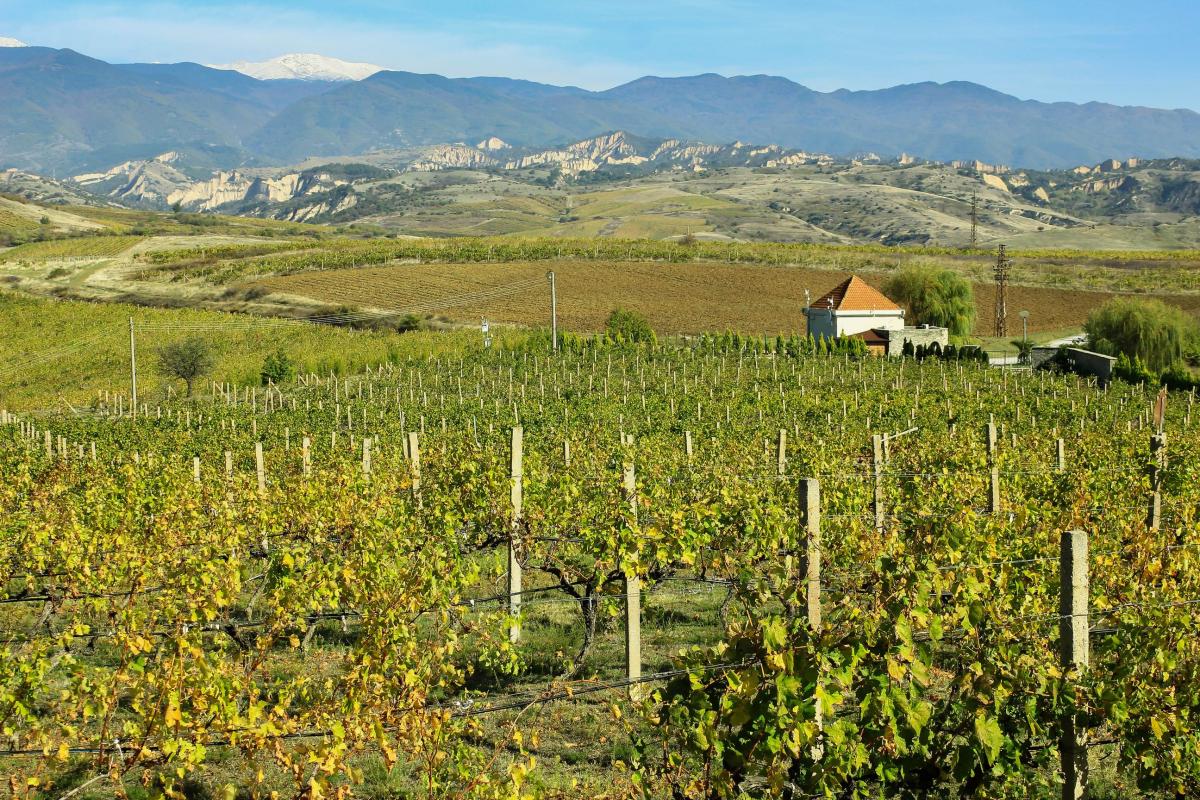Struma Valley - Preserving authenticity

Nestled between the Struma River and the Pirin Mountains, Struma Valley is one of the smallest and most distinctive wine regions in Bulgaria. The region is home to the Bulgaria’s smallest town, Melnik, which has only 325 inhabitants (2015). The quaint mountain town was founded over 1,000 years ago, and almost every house is a historical landmark to this day. Winemaking is deeply embedded in its cultural legacy, as wine has been produced here for millennia. Homer’s Iliad and the Odyssey make references to the ‘honey sweet black wines’ of Melnik.
Modern winemaking traditions in the Struma Valley date back to the 14th century, having been passed down through the generations. Even today, most families produce their own wine. Meanwhile, well-established producers are increasingly gaining international critical acclaim.
Unique microclimate
Bordering Macedonia to the west and Greece to the south, the climate here is influenced by the warm currents of the Mediterranean Sea and the two rivers – Mesta and Struma. Long hot summers and short mild winters, coupled with cinnamon-brown and alluvial-diluvial soils, make the Struma Valley the perfect place for the production of ripe dense red wines.
Unsurprisingly, red grape varieties dominate – from international ones like Cabernet Sauvignon, Merlot, Syrah to the unique for the region, Melnik 55 and Broad-leaved Melnik. Native white grape varieties in the area include Sandanski Misket and Keratzuda.
Indigenous grape varieties
Broad-leaved Melnik is mainly found near the towns of Petrich and Sandanski. The late-ripening red grape variety thrives on south-facing slopes. The bunches are medium-sized, while the grapes are medium-large with dark blue skins. It is mainly used for the production of dry reds and dessert wines.
Melnik 55, also known as Early Melnik, was created by the crossing of the ancient Broad-leaved Melnik and the French grape variety Valdigue in the 1970s. As the name suggests, the variety ripens earlier than the Broad-leaved Melnik. It can only be found in the region of Sandanski and Katuntsi. It thrives on sandy loam and humus-rich soils. Melnik 55 is resistant to low winter temperatures and grey rot. The grapes tend to be oval and juicy, with thick, dark blue skins. The variety produces wines with a deep ruby colour, rich aromas and aging potential.
Sandanski Misket is an indigenous white grape variety, producing high quality dry white wines. The variety was created from the crossing of Broad-leaved Melnik and Tamianka in 1963. Mid-ripening, it boasts aromas of citrus and tropical fruit, as well as notes roses and vanilla.
Keratzuda, meaning ‘girl’ in Greek, is another white indigenous Bulgarian variety that was originally cultivated on the banks of the Struma River. Late ripening, the variety is susceptible to downy and powdery mildew but moderately resistant to botrytis. It is often used for the production of orange wine and semi-sweet Jerez-style fortified wine.
Local wineries
Most wineries in the Struma Valley experiment with local and international grape varieties.
Damyanov Family Winery & Vineyards’ beginnings can be traced back to the end of the Second World War, when Prokop Spasov Marinkov (Grandpa Koppe) started a farm, which included vineyards. At the start of the communist regime in Bulgaria, his farm was taken away; however, it was restored after the fall in 1991. Yanush Damyanov, the son-in-law of Grandpa Koppe, played a major role in the restoration, helped later by his own son, Vladimir Damyanov in the recultivation of the land and the subsequent development of the vineyards. Today, the family winery, located at the very heart of the Struma Valley, in Strymyani village, creates artisanal wines with individual character in limited editions.
Logodaj, founded in 1994, also puts an emphasis on the typicality of the terroir and the micro-climate. The winery is located in the Petrich-Sandanski Valley, with vineyards near the medieval rock monastery St Panteleimon. The monastery has long been associated with the earliest period of the hermitage of St Ivan Rilski, and Kozhuh Hill – a remnant of an extinct volcano. The grapes from each vineyard are fermented separately so that their wines offer unique expressions of the place.
Libera Estate is a boutique winery, named after the goddess Libera (of fertility and freedom). Their vineyards are located near the village of Hotovo, between the towns of Sandanski and Melnik. Established in 2013, Libera Estate produces wines from the region’s distinctive grape varieties and offers a new take on international ones like Cabernet Franc, Vermentino, Assyrtiko, Grenache and Mourvedre. Libera has also released an orange wine from Keratzuda, which undergoes fermentation with the grape skins for 45 days.
Another winery that officially opened its doors in 2013 is Orbelia, located in the village of Kolarovo. It bears the Thracian name of the nearby Belasitsa mountain, meaning white and beautiful. The owners acquired their first vineyards in 2007, which were planted with Broad-leaved Melnik. Following the subsequent expansion of the vineyards, they now produce multifaceted wines from Melnik 55, Melnik 82, Melnik 1300, Rubin, Ruen, Sandanski Misket, Viognier, Syrah, Merlot, Cabernet Sauvignon, Cabernet Franc, Chardonnay and Muscat Ottonel.
Via Verde is another family-run wine project with beginnings at the end of 2013. Their vineyards cover 400 decares of sunny hills near the villages of Levunovo and Ilindentsi in the Sandanski area. The age of their vines is up to 15 years. Via Verde work with classic varieties such as Merlot, Cabernet Sauvignon, Cabernet Franc, Syrah, Muscat Ottonel and the indigenous Sandanski Misket, Early Melnik Vine and Keratzuda.
Other wineries in the Struma Valley region include Villa Melnik, Orbelus, Rupel and Medi Valley.
Browse our full selection of Struma Valley wines in our online shop.
Categories
Recent Posts
